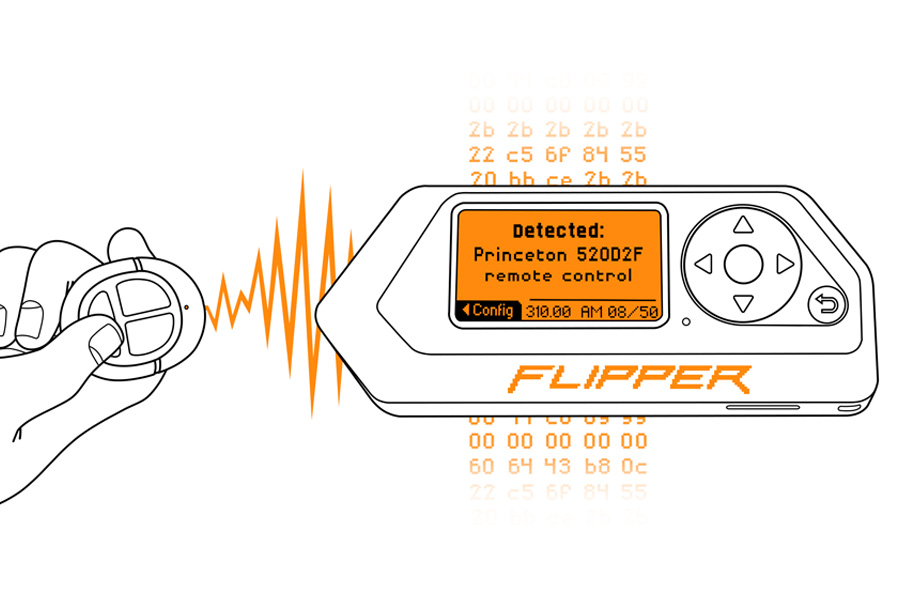In the world of cybersecurity and ethical hacking, multitools play a significant role in simplifying and streamlining tasks. One such popular multitool is the Flipper Zero, which has gained a large following due to its impressive capabilities. However, there are several other devices that can serve as viable alternatives to Flipper Zero, each with its own unique set of features and advantages. In this article, we will explore nine of the best Flipper Zero alternatives to help you decide which one best suits your needs.

1. Proxmark3 RDV4
1.1 Overview and capabilities
Proxmark3 RDV4 is a powerful RFID and NFC research tool that allows you to perform a wide range of tasks such as sniffing, reading, writing, and emulating tags. Designed specifically for penetration testers and security researchers, it provides a high level of versatility and compatibility with various RFID and NFC technologies.
1.2 Pros and cons
Pros:
- Wide range of supported RFID and NFC frequencies
- Compact and portable design
- Active development and community support
Cons:
- Steeper learning curve for beginners
- Pricier compared to other alternatives
1.3 How it compares to Flipper Zero
While Flipper Zero has RFID and NFC capabilities, Proxmark3 RDV4 is a more specialized tool in this domain, offering more extensive support for various RFID and NFC standards. On the other hand, Flipper Zero provides additional features, such as infrared remote control and a built-in badge emulator, which the Proxmark3 RDV4 lacks.
2. Wi-Fi Deauther Watch
2.1 Overview and capabilities
The Wi-Fi Deauther Watch is a wearable device designed to perform various Wi-Fi hacking tasks, such as scanning for networks, deauthenticating clients, and creating fake access points. It is based on the popular ESP8266 chipset and features an OLED display and an easy-to-use interface.
2.2 Pros and cons
Pros:
- Wearable and discreet design
- Easy-to-use interface
- Affordable price
Cons:
- Limited to Wi-Fi-based attacks
- Less versatile compared to other alternatives
2.3 How it compares to Flipper Zero
The Wi-Fi Deauther Watch is a more specialized tool focused on Wi-Fi hacking, while Flipper Zero provides a broader range of features, including RFID, NFC, and infrared capabilities. However, the Wi-Fi Deauther Watch’s wearable design makes it more discreet and portable compared to Flipper Zero.
3. HackRF One
3.1 Overview and capabilities
HackRF One is a versatile software-defined radio (SDR) platform that allows you to transmit and receive radio signals from 1 MHz to 6 GHz. This wide frequency range enables users to explore various wireless communication protocols, making it an excellent tool for security research, radio experimentation, and signal analysis.
3.2 Pros and cons
Pros:
- Wide frequency range (1 MHz to 6 GHz)
- Open-source hardware and software
- Active community support
Cons:
- Higher price compared to other alternatives
- Requires additional software for full functionality
3.3 How it compares to Flipper Zero
HackRF One is primarily focused on SDR capabilities, while Flipper Zero offers a more diverse set of features, such as RFID, NFC, and infrared remote control. However, if you’re interested in exploring radio frequencies and wireless communication protocols, HackRF One is a more suitable choice.
4. GreatFET One
4.1 Overview and capabilities
GreatFET One is an open-source, USB-based development platform designed for hardware hacking and prototyping. It features a wide variety of interfaces, such as SPI, I2C, UART, and GPIO, making it a versatile tool for interacting with various electronic devices and components.
4.2 Pros and cons
Pros:
- Highly customizable and extensible
- Open-source hardware and software
- Strong community support
Cons:
- Steeper learning curve for beginners
- Requires additional hardware for certain functionalities
4.3 How it compares to Flipper Zero
GreatFET One is a more general-purpose hardware hacking tool compared to Flipper Zero, which has specific features tailored for RFID, NFC, and infrared remote control. However, GreatFET One’s extensibility and customization options make it an excellent choice for those looking to develop custom hardware hacking solutions.
5. Ubertooth One
5.1 Overview and capabilities
Ubertooth One is a Bluetooth monitoring and testing tool that allows you to capture, analyze, and even inject Bluetooth traffic. It supports both classic Bluetooth and Bluetooth Low Energy (BLE) protocols, making it an invaluable tool for security researchers, penetration testers, and developers working with Bluetooth devices.
5.2 Pros and cons
Pros:
- Supports both classic Bluetooth and BLE
- Open-source hardware and software
- Active development and community support
Cons:
- Limited to Bluetooth-based attacks
- Pricier compared to other alternatives
5.3 How it compares to Flipper Zero
Ubertooth One is focused on Bluetooth analysis and testing, while Flipper Zero offers a broader range of features, including RFID, NFC, and infrared remote control. If your primary interest is in Bluetooth security, Ubertooth One is a more suitable choice. However, Flipper Zero provides a more comprehensive set of tools for various hacking scenarios.
6. RTL-SDR Blog V3
6.1 Overview and capabilities
RTL-SDR Blog V3 is an affordable and widely popular software-defined radio (SDR) receiver based on the RTL2832U chipset. It covers a frequency range of 500 kHz to 1.7 GHz, allowing users to explore various radio signals and wireless communication protocols. Additionally, it can be used for tasks like ADS-B aircraft tracking, trunked radio system monitoring, and weather satellite image reception.
6.2 Pros and cons
Pros:
- Affordable price
- Wide frequency range (500 kHz to 1.7 GHz)
- Large user community and support
Cons:
- Receive-only (no transmit capabilities)
- Requires additional software for full functionality
6.3 How it compares to Flipper Zero
RTL-SDR Blog V3 is primarily focused on SDR reception capabilities, while Flipper Zero offers a more diverse set of features, such as RFID, NFC, and infrared remote control. However, if you’re interested in an affordable SDR receiver for exploring radio frequencies and wireless communication protocols, RTL-SDR Blog V3 is a great choice.
7. BladeRF 2.0 micro
7.1 Overview and capabilities
BladeRF 2.0 micro is a powerful software-defined radio (SDR) platform with both transmit and receive capabilities. It covers a frequency range of 47 MHz to 6 GHz and offers a high sample rate, making it an excellent tool for advanced radio experimentation, signal analysis, and wireless security research.
7.2 Pros and cons
Pros:
- Wide frequency range (47 MHz to 6 GHz)
- High sample rate for advanced signal analysis
- Open-source hardware and software
Cons:
- Expensive compared to other alternatives
- Steeper learning curve for beginners
7.3 How it compares to Flipper Zero
BladeRF 2.0 micro is focused on advanced SDR capabilities, offering a wider frequency range and higher sample rate compared to Flipper Zero. While Flipper Zero provides a more diverse set of features, such as RFID, NFC, and infrared remote control, BladeRF 2.0 micro is better suited for those interested in advanced radio frequency analysis and wireless security research.
8. ESP32 Development Board
8.1 Overview and capabilities
The ESP32 Development Board is a versatile and affordable microcontroller platform that features Wi-Fi and Bluetooth connectivity. With its extensive GPIO support and programmability, the ESP32 allows you to create custom hardware hacking and IoT projects tailored to your specific needs.
8.2 Pros and cons
Pros:
- Affordable price
- Integrated Wi-Fi and Bluetooth capabilities
- Large user community and support
Cons:
- Limited functionality out of the box
- Requires programming and development skills
8.3 How it compares to Flipper Zero
While Flipper Zero offers a range of built-in features for hacking, such as RFID, NFC, and infrared remote control, the ESP32 Development Board provides a more customizable platform for creating tailored hardware hacking solutions. However, using the ESP32 requires programming and development skills, whereas Flipper Zero comes with pre-built functionalities.
9. Bus Pirate
9.1 Overview and capabilities
Bus Pirate is a versatile, open-source hardware hacking tool that provides a wide range of interfaces, including UART, SPI, I2C, and JTAG. It is designed to simplify the process of working with electronic devices and components, making it an invaluable tool for hardware hackers, security researchers, and electronics enthusiasts.
9.2 Pros and cons
Pros:
- Supports various interfaces and protocols
- Open-source hardware and software
- Affordable price
Cons:
- Lacks wireless communication capabilities
- Requires additional hardware for certain functionalities
9.3 How it compares to Flipper Zero
Bus Pirate is a more general-purpose hardware hacking tool compared to Flipper Zero, which has specific features tailored for RFID, NFC, and infrared remote control. While Bus Pirate provides support for various wired interfaces and protocols, it lacks the wireless capabilities that Flipper Zero offers.
Conclusion
In this article, we’ve explored nine of the best Flipper Zero alternatives, each offering its own unique set of features and advantages. When choosing the right tool for your needs, it’s essential to consider factors such as price, functionality, and your specific requirements. By understanding the strengths and weaknesses of each alternative, you can make an informed decision and select the most suitable device for your hacking and cybersecurity adventures.
Frequently Asked Questions (FAQs)
- Why would someone want to use a Flipper Zero alternative? Flipper Zero alternatives may offer different features, specialized functionalities, or better compatibility with specific technologies, making them more suitable for certain tasks or projects.
- Are these alternatives legal to use? The legality of using these devices depends on your local laws and how you intend to use them. Always ensure you’re using these tools ethically and responsibly, and consult your local regulations before using them.
- How do I choose the right alternative for my needs? Consider your specific requirements, such as the technologies you want to work with, your budget, and your level of expertise. Evaluate each alternative based on its features, pros, and cons to find the most suitable option for your needs.
- Can these alternatives be used for ethical hacking and penetration testing? Yes, many of these alternatives Yes, many of these alternatives are designed specifically for ethical hacking, penetration testing, and security research. Always ensure you have proper authorization and follow ethical guidelines when using these tools.
- Is it possible to use multiple alternatives together for more functionality? Absolutely. Combining multiple tools can provide additional functionality and enable you to perform more advanced tasks or work with a broader range of technologies.
- Do I need any special skills or knowledge to use these tools effectively? Some of these alternatives may require a certain level of technical expertise or familiarity with specific technologies. However, there are many resources available online, such as tutorials and forums, to help you learn how to use these tools effectively.
- How can I learn more about using these tools for hacking and cybersecurity? There are numerous online resources, including blogs, forums, and courses, that cover various aspects of hacking and cybersecurity. Participating in the communities surrounding each tool can also provide valuable insights and support.
- Can these alternatives be used for purposes other than hacking? Yes, many of these tools can be used for other purposes, such as electronics prototyping, radio experimentation, or IoT development, depending on their capabilities and features.
- Where can I purchase these Flipper Zero alternatives? You can purchase these alternatives through various online retailers, such as Amazon, eBay, or specialized electronics stores. Additionally, some manufacturers have their own online stores where you can purchase their products directly.
- What should I consider before purchasing one of these alternatives? Before purchasing an alternative, consider factors such as your specific needs, budget, technical expertise, and the tool’s compatibility with the technologies you want to work with. It’s also essential to research the tool’s features, pros, and cons, as well as its community support, to ensure you make an informed decision.
